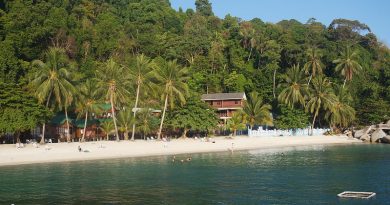The Malaysian Diaspora
The Malaysian diaspora is a relatively small one, numbering around 1 million people, a small number considering its population of over 32 million. It is also generally confined to nearby countries such as Singapore (686,000) and Brunei (70,000). Other major centres include Australia (138,000) and the United Kingdom (63,000). The spread of the diaspora to the far reaches of the world was prompted by a variety of factors rather than major singular events.
Singapore is, by some distance, home to the largest Malaysian diaspora population. This is due to the close proximity between the two countries, cultural similarities and mutual relationship to the British Empire as former colonies. The majority of Singapore’s Malaysian population are ethnically Chinese, a major demographic in Malaysia itself. The cultural impact of the Malaysian population in Singapore is abundantly clear, particular regarding the country’s culinary identity, which draws heavily from Malaysian cuisine. If one breaks down the demographics of Singapore, its population is 74% Chinese, many of whom are ethnically-Chinese Malays and 13% Malay, which reflects the large size of Singapore’s Malaysian population. As Singapore does not, in technical terms, have a native population as a wholly British creation, its population is influenced by a diverse range of cultures. The Malaysian influence however is hugely significant, demonstrated by their population and cultural impact in the country.
The Malaysian population of Australia is amongst the most substantial in the world and one of the oldest immigrant communities in the country. Malaysian labourers were recruited by the British government, due to their skillset in sugar cane plantations and pearl diving. They were deployed throughout the country, particularly in the Northern Territory and Western Australia. Due to Malay workers’ unique skill-set, the demand for their labour was very high in the country. There was steady stream of Malaysian immigration into Australia up until the implementation of the Immigration Restriction Act-or the ‘White Australia Policy’, which brought it to a standstill. Malaysian immigration rates resumed in the wake of the Second World War, which caused considerable upheaval and population displacement in Malaysia. Many settled in Australia due to relative proximity, shared links to the British Commonwealth and the pre-existing Malaysian community there. The population increased in the 1970’s following the dissolution of the Immigration Restriction Act. A large number of Malaysian Australians are ethnically Chinese and Christian. The population is widely dispersed throughout the country, with major hubs in large urban centres such as Sydney and Melbourne. Additionally, the Malaysian population is a majority in the Australian external territory of Christmas Island, accounting for over 90% of the general population.
The Malaysian population of the United Kingdom is another major diaspora community. Overwhelmingly centred in Greater London and the surrounding South East England, it has existed in some form since Malaysia’s beginnings as a British colony. The population increased significantly following the Second World War, particularly following Malaysia’s independence in 1957. The links to the British Empire have ensured Malaysian immigration to the UK has been fairly constant, albeit at a lower rate.
Given Malaysia’s status as a highly multicultural country in its own right, different facets of its population have expanded throughout the world, leaving a slightly different cultural imprint in each destination. Despite this, the unified Malaysian culture is clear.
Main Image: Malaysia, Bruno Kehrli, Flickr Creative Commons





